One Million Bricks
Was San Francisco's massive Calvary Presbyterian church moved more than 20 blocks in 1901? Yes and no.
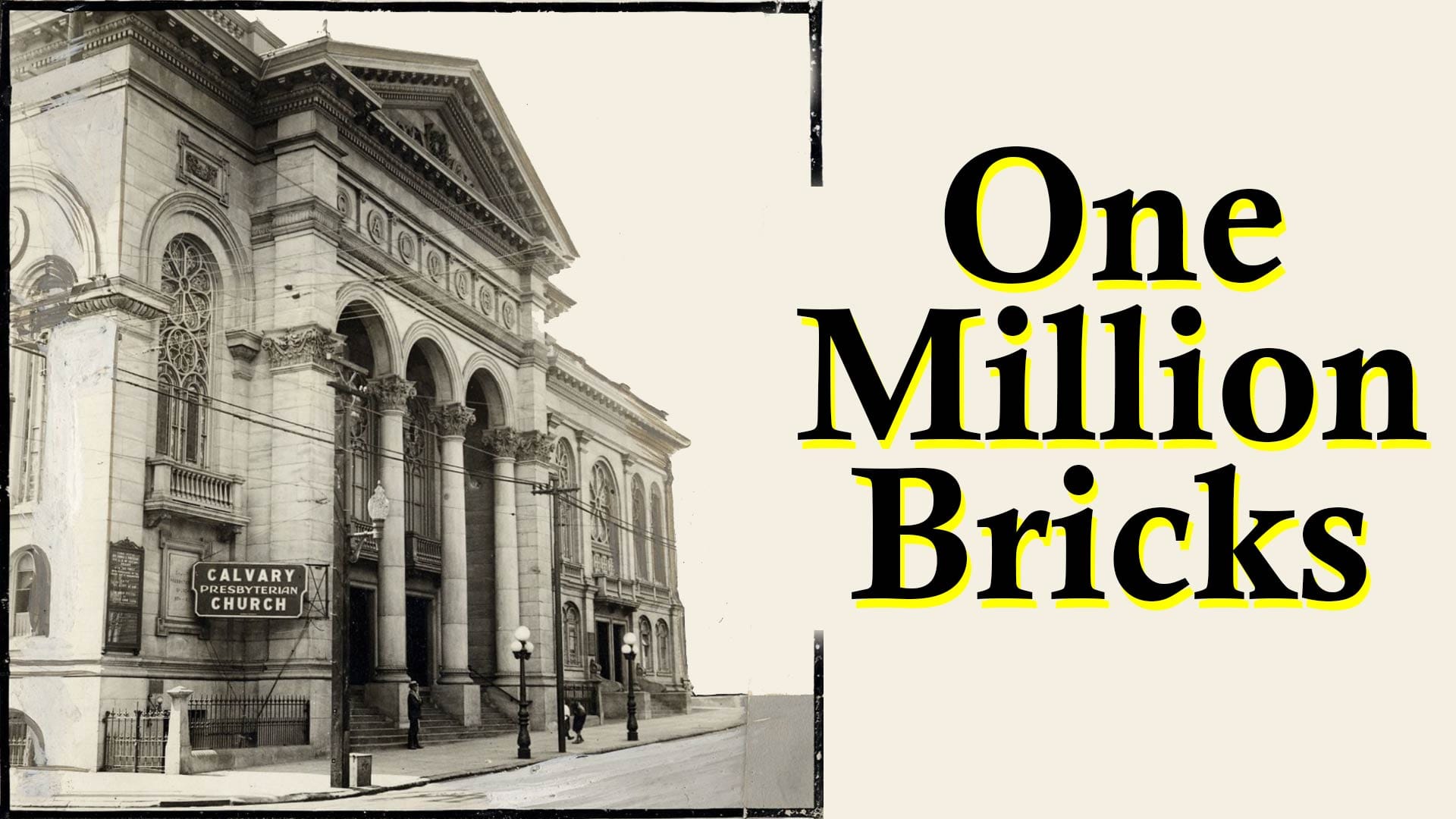
The story: the imposing Calvary Presbyterian Church on the corner of Fillmore and Jackson streets—which seems like an ancient temple that has stood on its plot for time immemorial—was moved there from Union Square.
You know I love stories of moved buildings. Or buildings that used to be something that moved. So let’s play detective and take a before-and-after look. Here’s the church today:

Here’s the previous Calvary Church on the northwest corner of Powell and Geary Streets, opened in 1869:
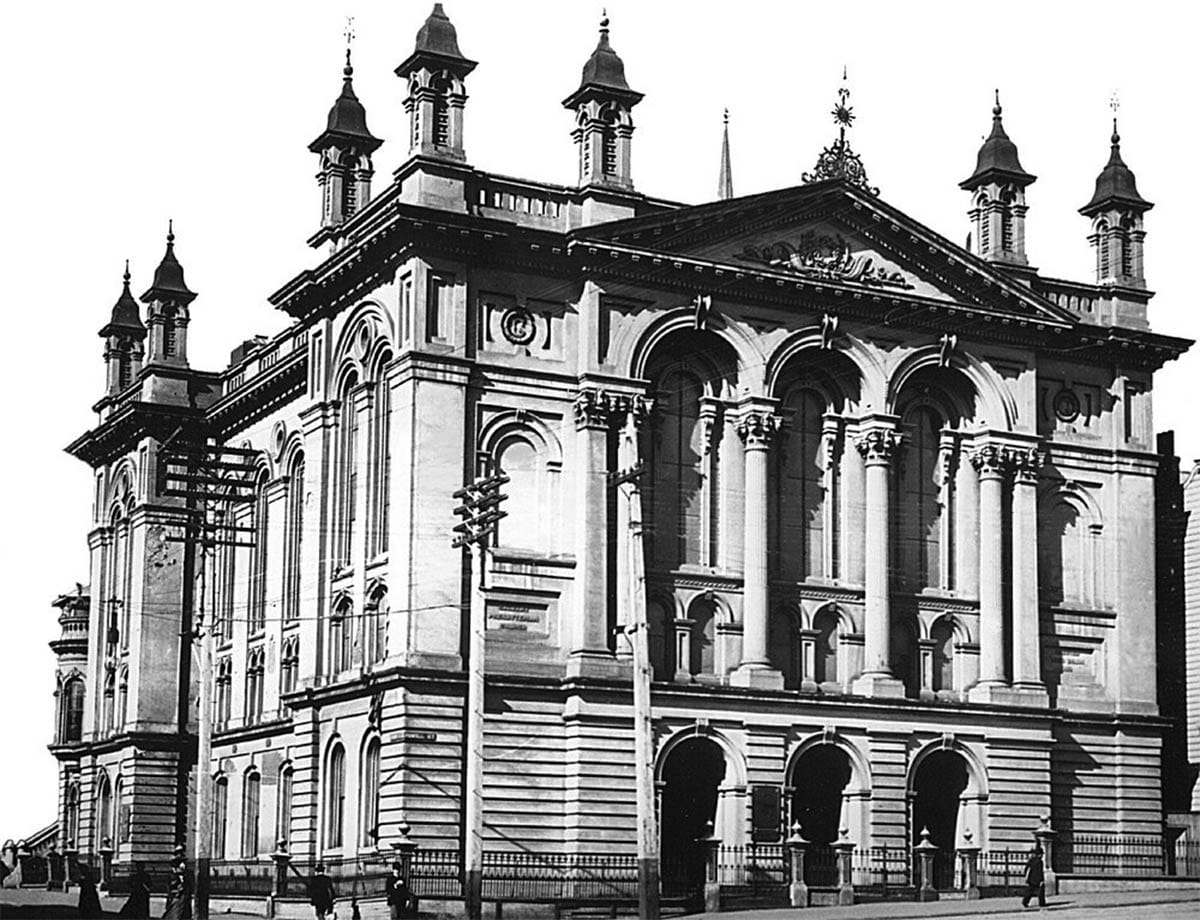
Definitely not an exact match, but that triangular pediment and those columns make one feel there may be something to the whole moved-church story.
Union Square was very pastoral in the late 19th century, the home of large churches, temples, and social clubs:
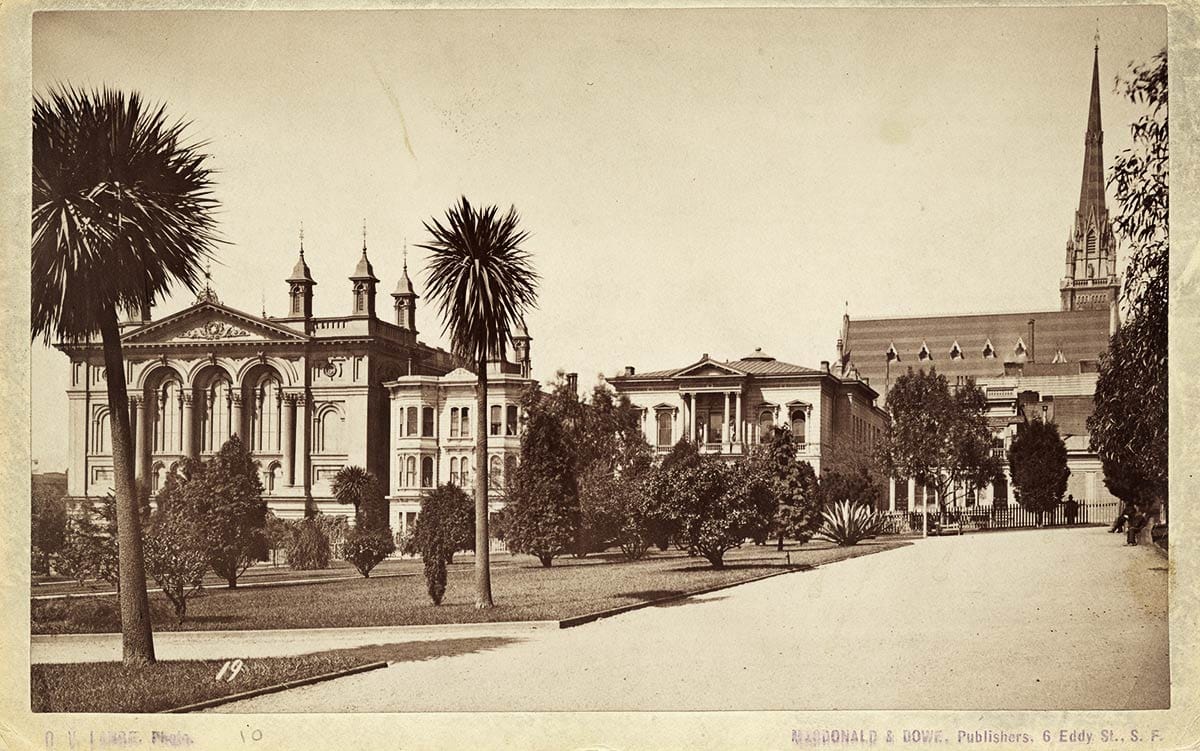
From the 1860s onward, the First Unitarian Church, Temple Emanu-El, First Congregational Church, Temple Ohabai Shalome, Trinity Church, and Calvary Presbyterian all welcomed large congregations facing or a block off of Union Square.
From its beginnings in 1854, Calvary church sported elements of Greek Revival style in its architecture, something favored by institutions that want to give off an air of authority, power, and dependability. You see it a lot with churches and banks. Even Shyster Savings and Loan can seem trustworthy doing business in a knock-off Parthenon.
Before building the 1869 church at Powell and Geary, the Calvary congregation worshiped in a smaller Greek-temple-like church on Bush Street, a building which made up for its relatively small size with a heck of a lot of stairs to climb:
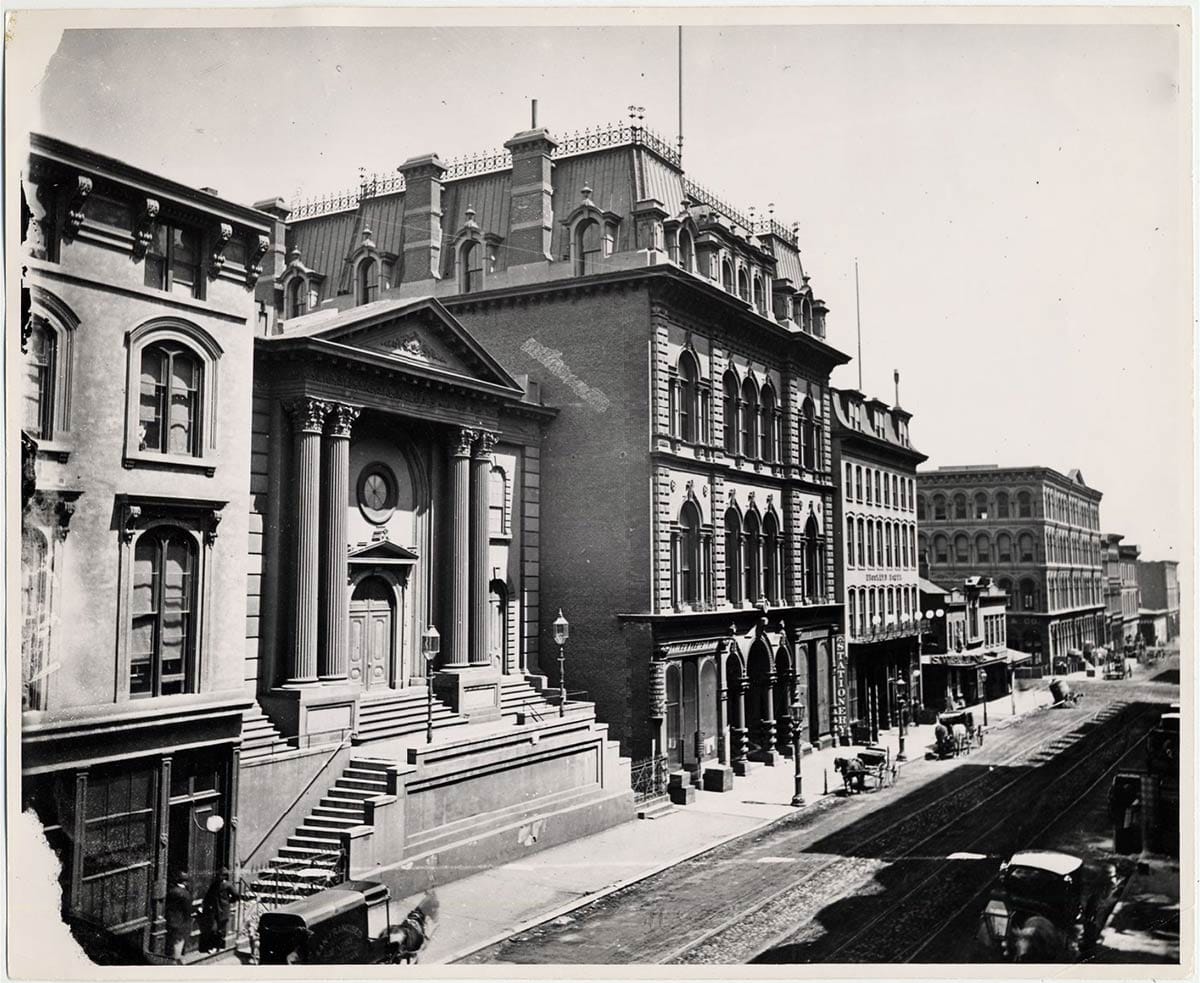
So, with such an affinity for triangular pediments and Corinthian columns, perhaps the current Calvary church on Fillmore and Jackson streets was merely designed in homage to its predecessors and not moved from Union Square?
The answer is yes and no.
Go West, Young Church

San Francisco began expanding west after the Civil War and by the 1880s and 1890s the center of the city’s population had shifted that direction. Downtown religious institutions started looking for new locations on the far side of Van Ness Avenue while Union Square transitioned into the city’s premiere retail and hotel zone.
A congregation could sell its land for big money and construct a new place of worship closer to where its members had moved. First Unitarian left for Geary and Franklin in 1889. Trinity moved to Bush and Gough in 1893. Temple Ohabai Shalome relocated to Bush and Laguna in 1895. Emanu-El purchased land on Sutter Street and Van Ness for a new temple. In 1900, Calvary Presbyterian Church decided to head for Pacific Heights.
Calvary had made a good investment in 1868 when it purchased its 97½ by 137½ foot lot on Powell and Geary for $18,000, equivalent to about $389,000 in 2024. Thirty-two years later, that choice corner facing Union Square sold for $240,000, equal to some $8.7 million in 2024 dollars.
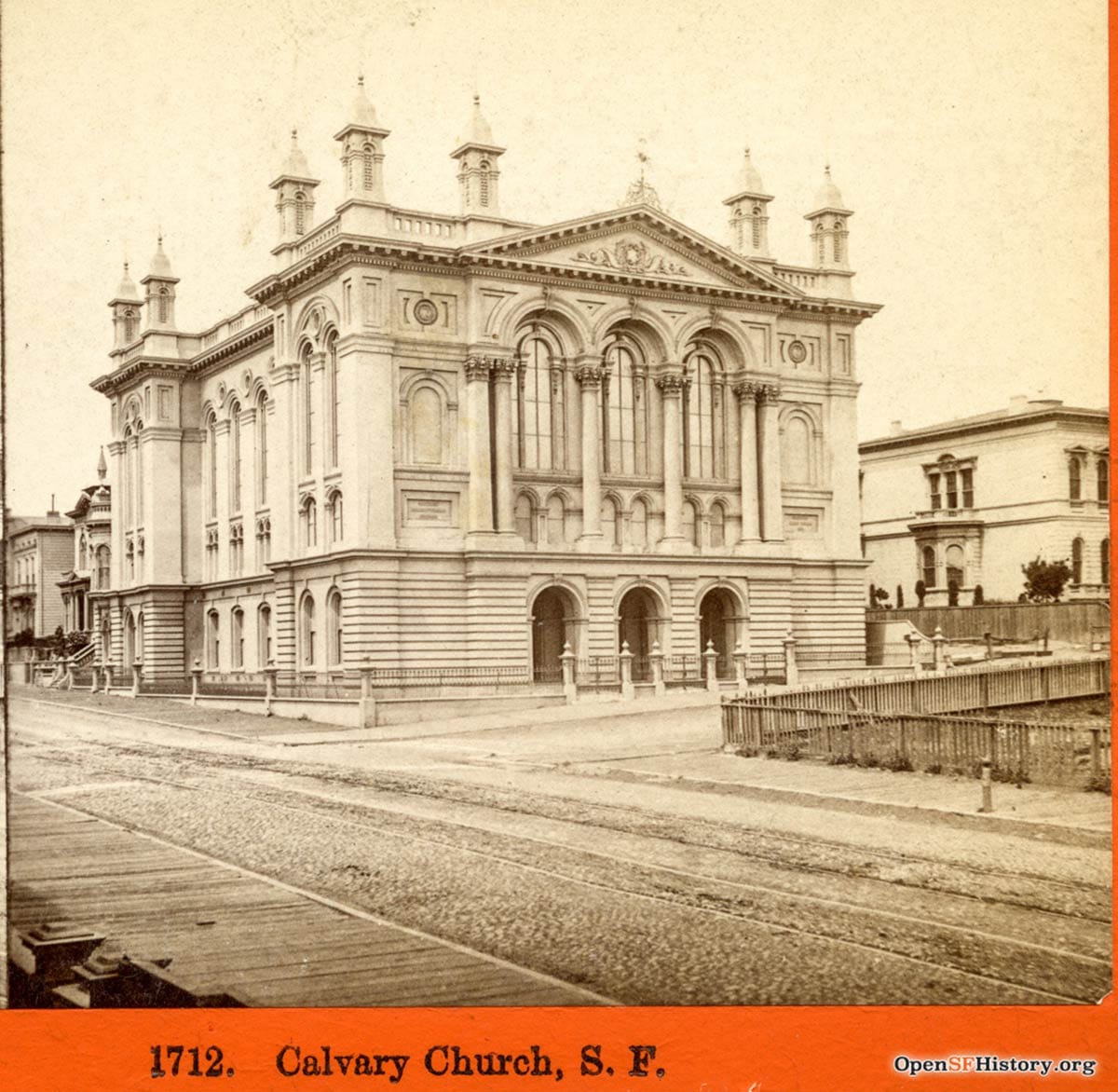
In November 1900, with an architectural design from the McDougall Brothers (members of the church), the Calvary congregation entered into $83,048 of contracts with C. A. Wagner, M. Keating, J. Leonard, W. W. Montague & Co., David McWhirter, J. H. McKay, and William S. Snook & Son to construct a church and chapel building at Fillmore and Jackson Streets.
McKay had the job of taking down the old building on Union Square, which wasn’t included in the sale for the Powell Street land. Here’s where we get our moved-church story.

Calvary was not picked up off its foundation whole and dragged 24 blocks west and north. (Some very large buildings in San Francisco’s history were moved in such a way, but most of those were relatively light redwood-framed structures.) Calvary was deconstructed brick by brick and its bones reused to build a near copy at the Fillmore and Jackson location.
Decorative elements and interior features such as the cast-iron balcony of the church were salvaged and reinstalled in the new Calvary, fitted to an expanded design that felt almost like the original.
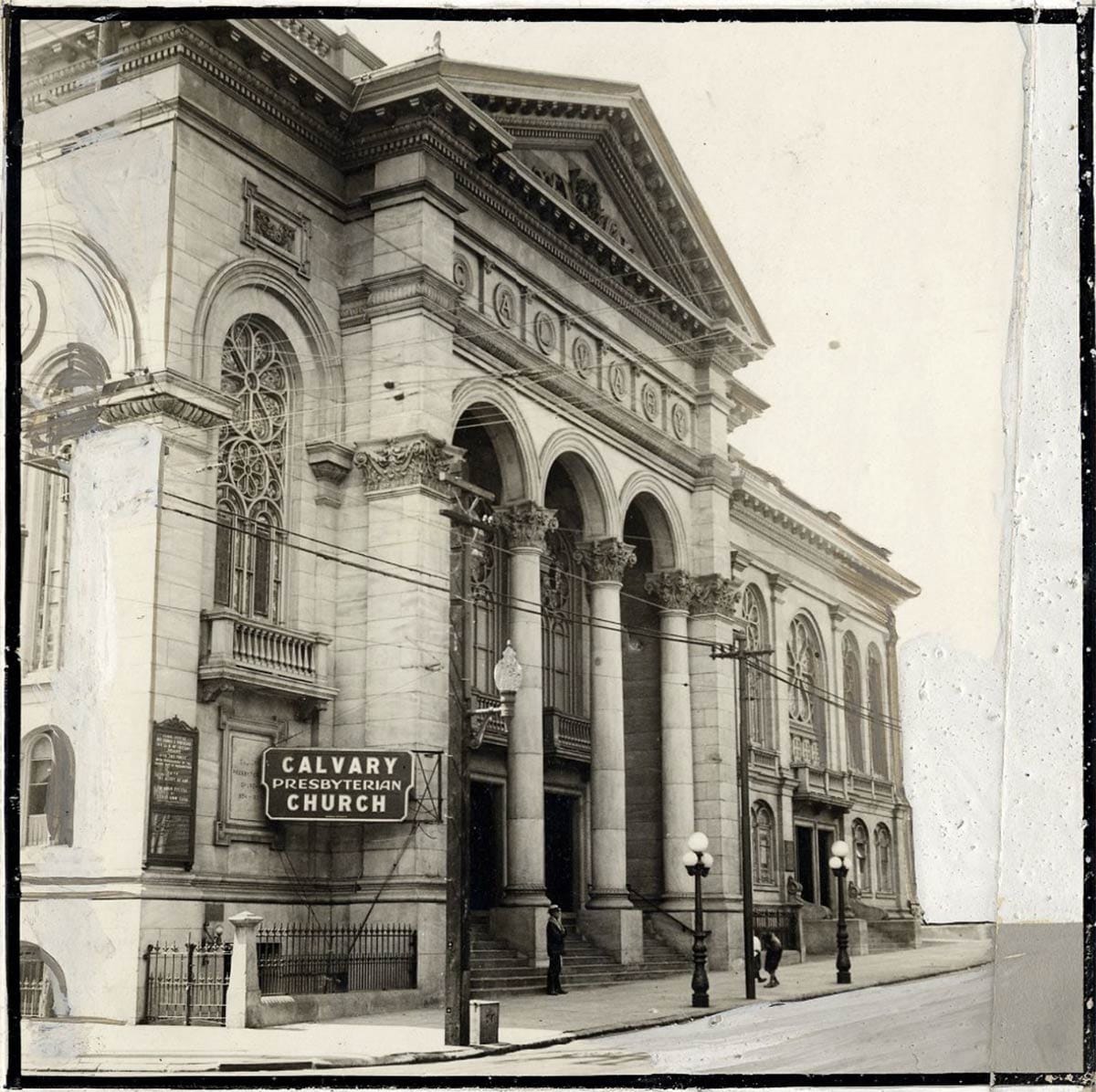
“Outside and in, the general architectural plan of the former building has been preserved,” noted the San Francisco Examiner. “Then, too, much of the old structure is actually present in the new edifice. The woodwork of the galleries did duty in the elder edifice; so did the window frames, and built in the walls are a million bricks that once inclosed the worshipers at Old Calvary.”
The whole job was done in two years. McKay’s men contractually had just six months to clear the Powell and Geary site, and may not have been as careful as they could have been:
Mrs. Stanley Scovern testified in Justice of the Peace Daniels’ court yesterday that most of her boarders at 309 Powell street moved out because the workmen employed in tearing down the old Calvary Church building at Powell and Geary streets let bricks fall through the windows of their rooms. Mrs. Scovern had brought suit to recover damages… — (San Francisco Examiner, March 20, 1901)
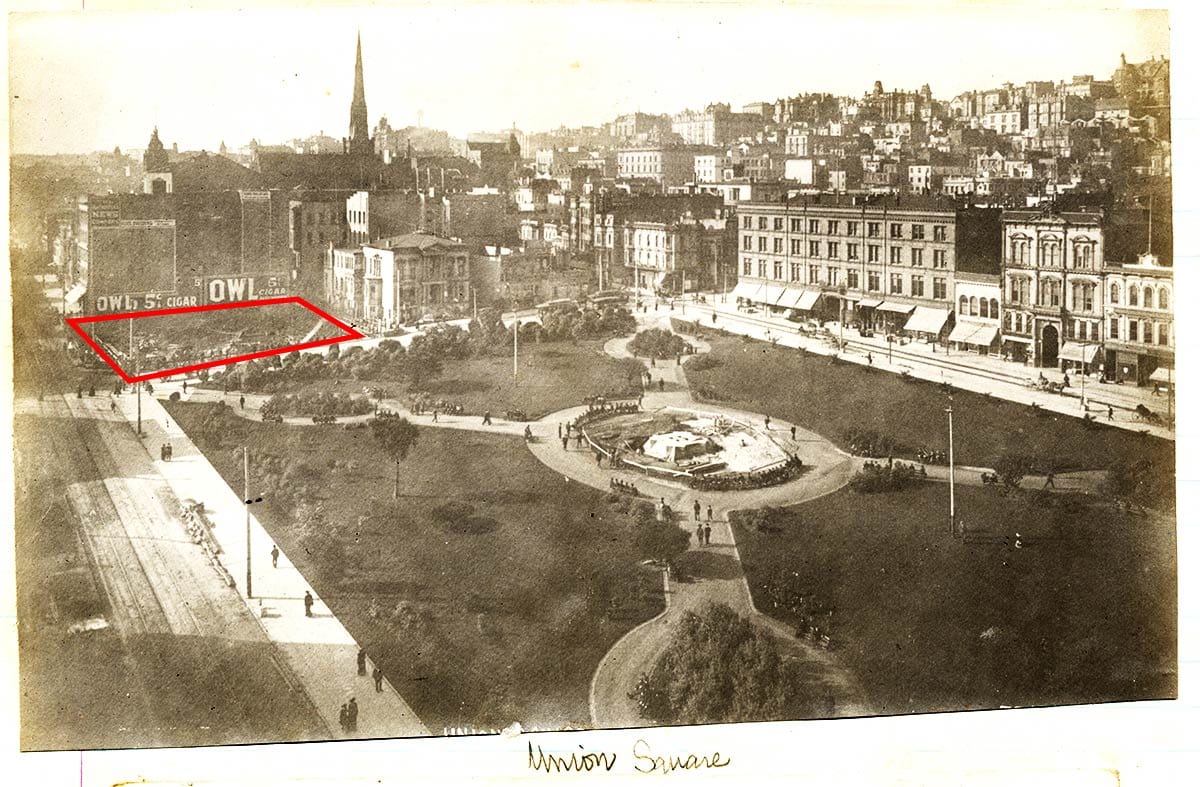
The new Calvary cornerstone was laid on July 4, 1901. The church opened on Thanksgiving Day, November 27, 1902. At the service, pastor John Hemphill referenced the massive recycling job surrounding the congregation: “Surely, surely, we should all of us feel that this is home.”
Meanwhile, the St. Francis Hotel went up on the church’s old Union Square site and opened in March 1904.
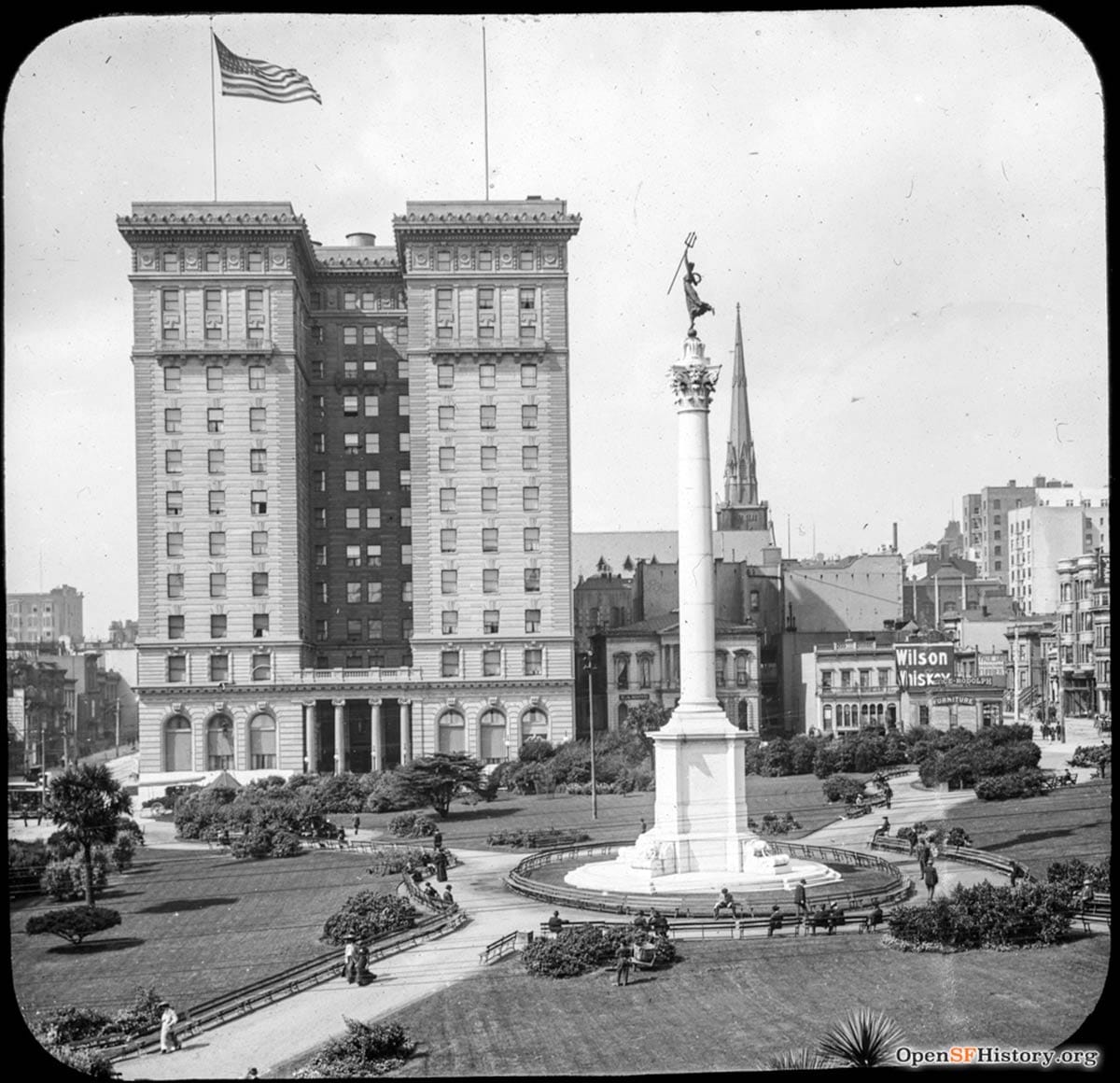
In its new location, Calvary got through the 1906 earthquake pretty well, while the St. Francis was gutted by the massive post-quake fires.
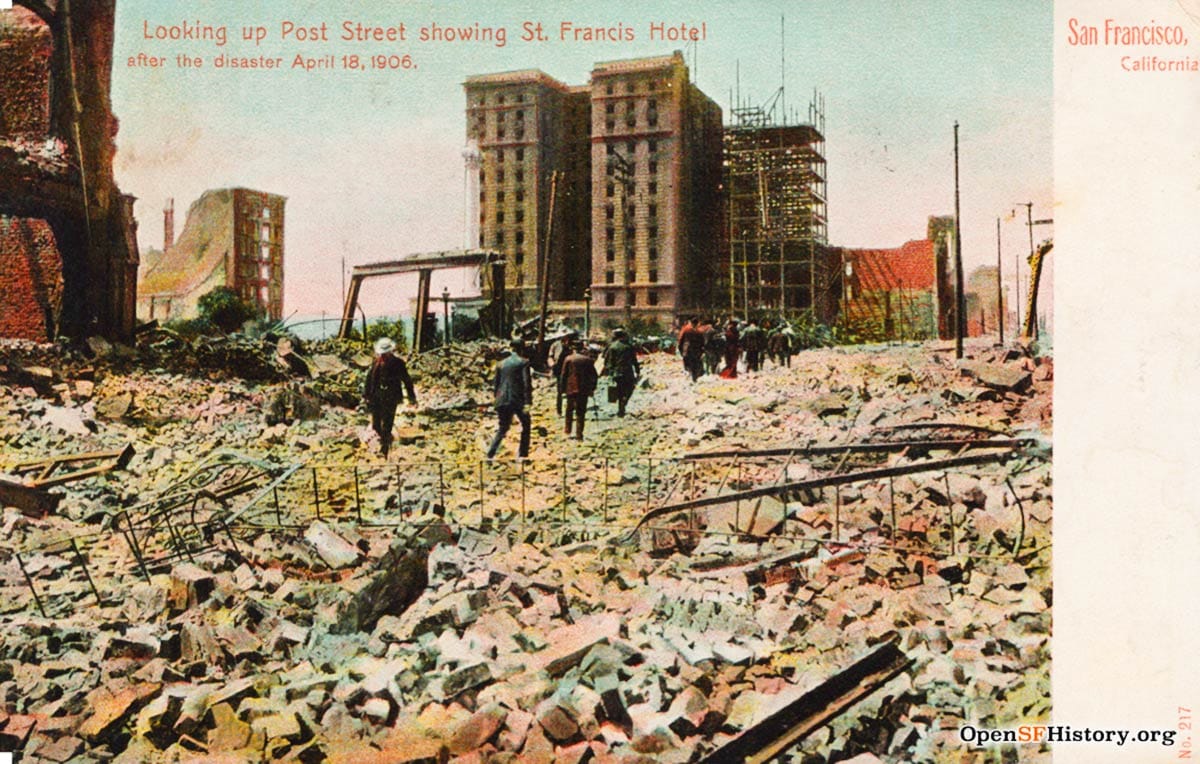
If you attend a concert or service at Calvary today you are surrounded by pieces of a church dating back to the 1860s and which certainly would have been lost at the old location in 1906.
Are there a million bricks though? That seems high, especially considering how many seem to have fallen through poor Mrs. Scovern’s boarding house windows.
Woody Beer and Coffee Fund
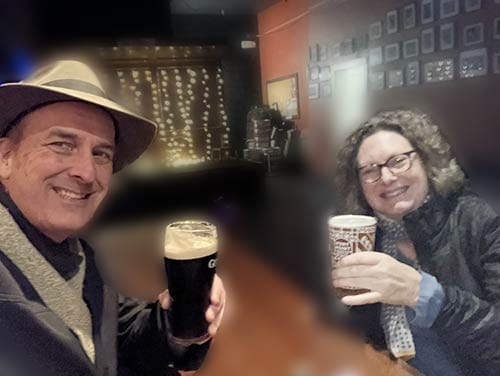
Laura D. (F.O.W.) and I enjoyed a pint at the Plough and Stars thanks to contributors to the Woody Beverage Fund. We talked about Pacifica history and the Bay Area’s great Icelandic developers, among other topics. Thanks to Daniel G. and Ted B. (F.O.W.) for setting us up. Is it your turn? Let me know when you’re free!
Sources
“Real Estate is Active, San Francisco Call, May 26, 1900, pg. 11.
“San Francisco Real Estate,” San Francisco Examiner, November 30, 1900, pg., 13.
“Movement of Real Estate in and About San Francisco,” San Francisco Call and Post, December 3, 1900, pg. 9.
“Dropped Bricks Through Window,” San Francisco Examiner, March 20, 1901, pg. 7.
“Congregation Worships in New Calvary Church,” San Francisco Examiner, November 28, 1902, pg. 4.
Randolph Delehanty, San Francisco City Landmark #103 Case Report, 1977.
Winchell Hayward, “Calvary Presbyterian Church,” National Register of Historic Places Nomination Form, 1978.

